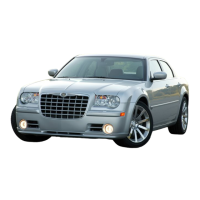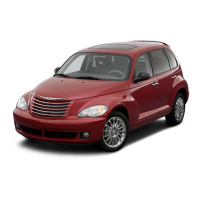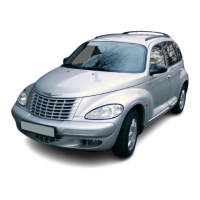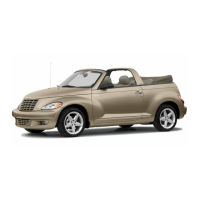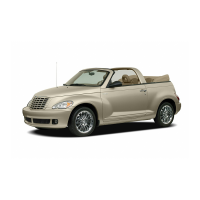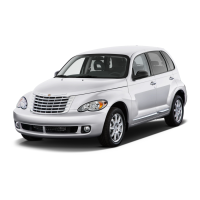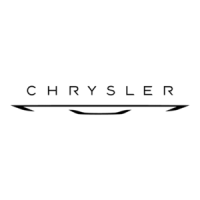
Do you have a question about the Chrysler PT CRUISER 2009 and is the answer not in the manual?
| Brand | Chrysler |
|---|---|
| Model | PT CRUISER 2009 |
| Category | Automobile |
| Language | English |
Provides guidance on navigating the owner's manual sections and using its features effectively.
Highlights critical warnings and cautions for operating procedures to prevent accidents and vehicle damage.
Explains the location and significance of the Vehicle Identification Number (VIN).
Warns about the potential safety risks and effects of unauthorized modifications to the vehicle.
Details about vehicle keys, including removal, locking doors, and ignition reminders.
Explains the function of the Sentry Key immobilizer system for vehicle security and operation.
Covers operations for locking/unlocking doors and liftgate using the RKE transmitter.
Describes the vehicle's restraint systems, including seat belts and airbags, for occupant safety.
Instructions on adjusting inside and outside rearview mirrors for optimal visibility.
Details on using the UConnect system for voice-activated phone calls and system features.
Information on adjusting front seats and the operation of six-way power seats with manual recliner.
Overview of the main controls and features located on the instrument panel.
Explains the function of various gauges and indicators on the instrument cluster.
Describes the EVIC's functions, including system status, warning displays, and personal settings.
Step-by-step instructions for starting the vehicle, including manual and automatic transmissions.
Guidelines for cooling down the turbocharger after severe operation to ensure engine longevity.
Operating instructions for vehicles equipped with a 5-speed manual transaxle, including shift speeds.
Information on operating the four-speed automatic transaxle and its reset mode.
Explains how the Traction Control System (TCS) improves acceleration and steering on slippery surfaces.
Covers essential tire safety information, including markings, load, and pressure.
Provides safety tips, definitions, and requirements for towing trailers with the vehicle.
Detailed instructions and safety warnings for safely changing a tire using the vehicle's jack.
Step-by-step guide for safely jump-starting a vehicle with a dead battery using booster cables.
Instructions for towing a disabled vehicle, covering key-in-ignition and without key-in-ignition scenarios.
Explains the OBD II system's role in monitoring emissions and engine performance.
Outlines required maintenance services for optimal vehicle performance and reliability.
Guidance on checking engine oil level, selecting oil, and changing engine oil and filter.
Information on checking coolant levels, draining, flushing, refilling, and selecting coolant.
Routine checks to perform each time you stop for fuel to ensure optimal operation.
Monthly maintenance checks to ensure tire, battery, and fluid levels are in good condition.
Maintenance tasks to be performed concurrently with each engine oil change.
Recommended maintenance intervals for vehicles operated under severe driving conditions.
Recommended maintenance intervals for vehicles with a non-turbocharged engine under normal conditions.
Recommended maintenance intervals for vehicles with a turbocharged engine under normal conditions.
Tips for preparing for service appointments and interacting with service advisors.
Information on how to contact the manufacturer's customer center for unresolved issues.
Contact information for Chrysler LLC customer assistance in the U.S.
Refers to the Warranty Information Booklet for terms and provisions of Chrysler Motors LLC warranties.
Guidance on how to report safety defects to NHTSA and the manufacturer.
